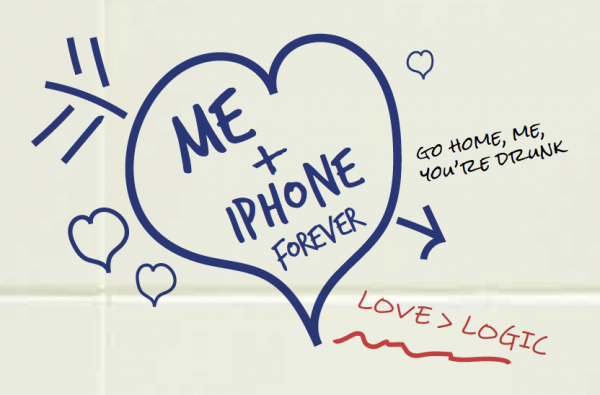How emotion differentiates an announcement from an ad.
Why do we need to concern ourselves with an emotional element in advertising? Aren’t the facts – the truth – persuasive enough?
If you’re honest with yourself, when’s the last time you bought anything purely – purely – based on the facts? When do you buy just because someone is hectoring you to do so?
 Why do we buy anything – a product or an idea? “I really need the new iPhone.” (Need is such a strong word.) “Lexus is a better car than a Toyota.” (Hint: it’s pretty much the same car – shared parts, different branding.) “Somebody’s going to win the lottery, might as well be me.” (Uh, no. Probably not.) There’s nothing rational about any of these statements, but they each tie into an underlying emotional desire that overrides logic.
Why do we buy anything – a product or an idea? “I really need the new iPhone.” (Need is such a strong word.) “Lexus is a better car than a Toyota.” (Hint: it’s pretty much the same car – shared parts, different branding.) “Somebody’s going to win the lottery, might as well be me.” (Uh, no. Probably not.) There’s nothing rational about any of these statements, but they each tie into an underlying emotional desire that overrides logic.
When it comes to creating impactful, memorable advertising, it’s important to remember this one thing: we’re all humans (except for those bots among you). It’s the emotions that we recall in life.
This might seem obvious, but time and again, when it comes to marketing their own products, otherwise bright and successful people start to recite a list of “whats”—facts, product details, specifications, logical reasons to buy—without addressing the “whys”—emotional drivers, desires, and deeper, often unspoken, needs.
Look at some of the iconic ads of the past 50 years: Apple’s “Think Different” campaign, Dove’s “Real Beauty,” Avis’ “We Try Harder,” even Keep America Beautiful and the tearful Iron Eyes Cody. Each one touched an emotional nerve, making us feel something – all while supporting a strong, single-minded message.
Emotion can be used in advertising in many ways – laughter, happiness, warmth, shock, even fear or sadness. When communication connects on an emotional level, we engage and remember. It’s what makes us care. So remember that when you start the list of “mandatories” on your next agency creative brief.

This isn’t limited to traditional media, such as print or TV. It’s why you’ll hear your agency talk about “experience” when describing their vision for your new website. It’s a good place to step back and take a serious look in the mirror, because, in my experience, most websites are page after page of “what” with very little “why.” Any tactic is only as effective as its emotional truth.
It’s not that facts aren’t important, but we use reason to support our desires. Once we’ve connected on an emotional level, rather than preached or spouted a laundry list of facts, we can present our idea and how it fits in with our customers’ lives and beliefs.




